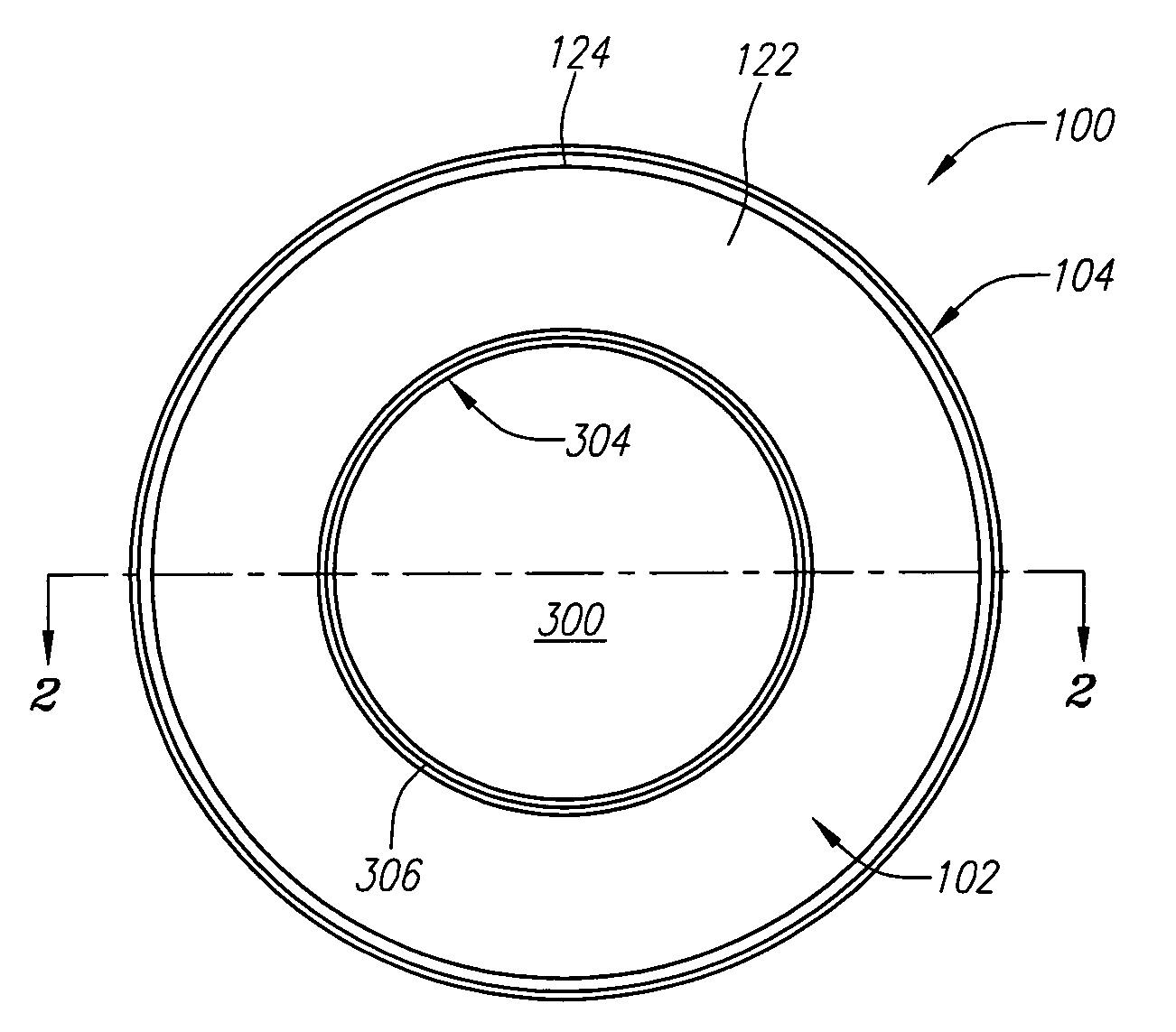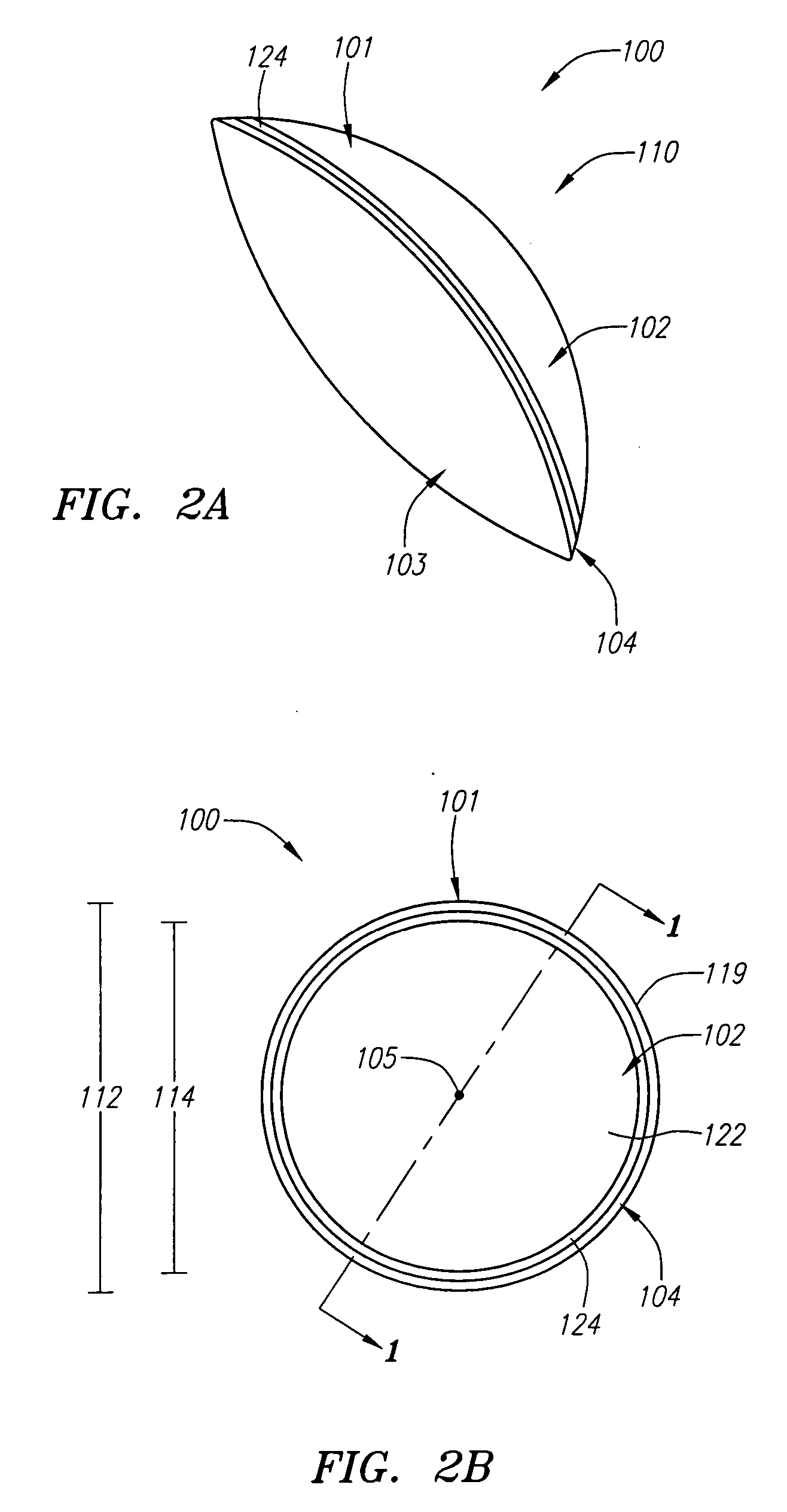Implantable lenses with modified edge regions
a technology of edge region and implantable lens, which is applied in the field of implantable lenses, can solve the problems of corneal haze, undesirable condition, vision impairment, etc., and achieve the effect of less permeability and same permeability
- Summary
- Abstract
- Description
- Claims
- Application Information
AI Technical Summary
Benefits of technology
Problems solved by technology
Method used
Image
Examples
Embodiment Construction
[0030] Described herein are improved implantable lenses with modified edge regions that can reduce stimulation of adverse tissue reactions in proximity to the lens. FIGS. 2A-E depict various views of an example embodiment of implantable lens 100. FIG. 2A is a perspective view depicting implantable lens 100, where lens 100 has lens body 101, anterior surface 102, posterior surface 103 and outer edge surface 104. FIG. 2B is a top-down view of lens 100 taken in direction 110. Here it can be seen that lens body 101 has a generally circular outer profile 119 with central apex 105 representing the most anterior point of anterior surface 102. Diameter 112 represents the overall diameter of lens body 101 and diameter 114 represents the diameter of corrective portion 122, which is the portion of anterior surface 102 configured to provide correction for one or more specific visual impairments.
[0031]FIG. 2C is a cross-sectional view of lens 100 taken along line 1-1 of FIG. 2B. From this view ...
PUM
| Property | Measurement | Unit |
|---|---|---|
| thickness | aaaaa | aaaaa |
| diameter | aaaaa | aaaaa |
| thickness | aaaaa | aaaaa |
Abstract
Description
Claims
Application Information
 Login to View More
Login to View More - R&D
- Intellectual Property
- Life Sciences
- Materials
- Tech Scout
- Unparalleled Data Quality
- Higher Quality Content
- 60% Fewer Hallucinations
Browse by: Latest US Patents, China's latest patents, Technical Efficacy Thesaurus, Application Domain, Technology Topic, Popular Technical Reports.
© 2025 PatSnap. All rights reserved.Legal|Privacy policy|Modern Slavery Act Transparency Statement|Sitemap|About US| Contact US: help@patsnap.com



